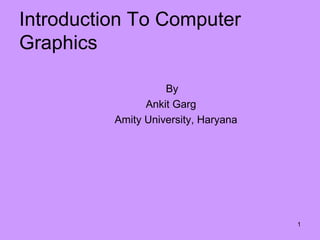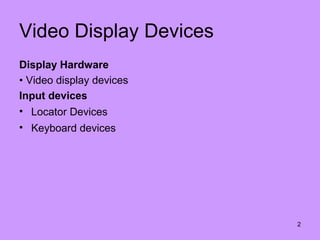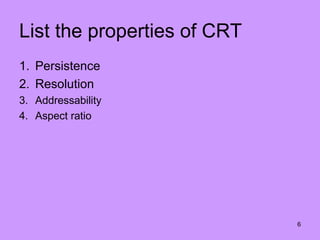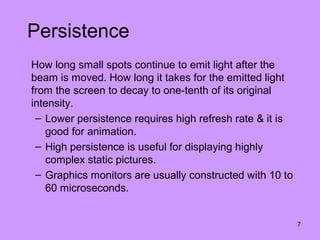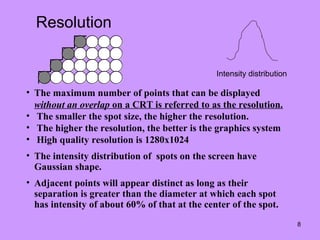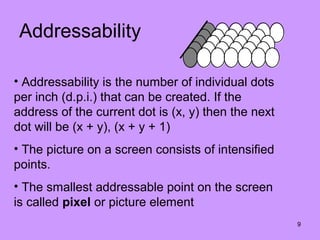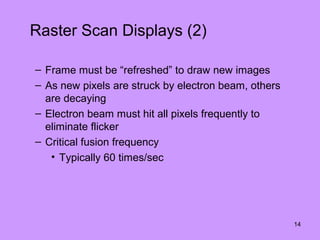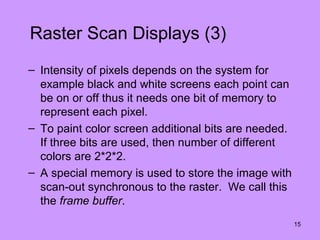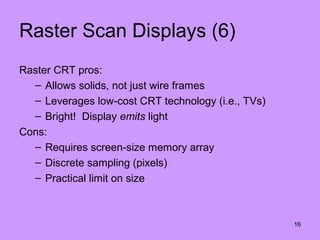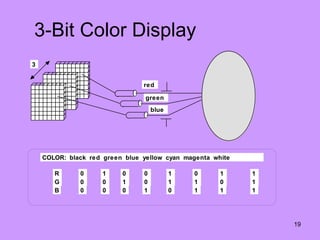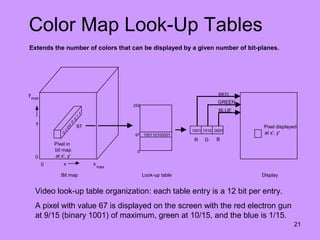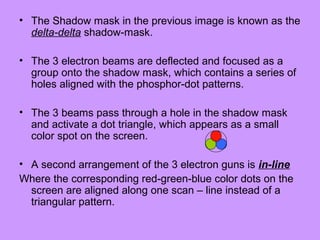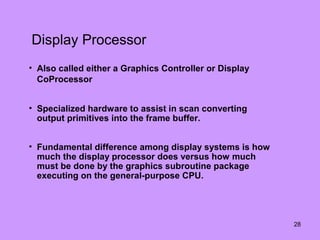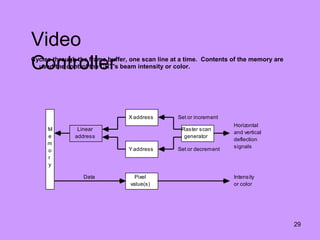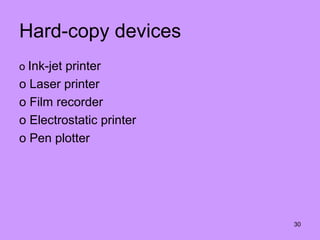This document discusses cathode ray tubes (CRTs) and how they work as display devices for computer graphics. It explains that CRTs contain an electron gun that emits a stream of electrons which are focused into a beam and directed to specific points on the phosphor-coated front of the picture tube. When the electron beam hits a phosphor dot, it glows proportionally to the beam strength. Color CRTs use three electron guns and a shadow mask to separately excite red, green, and blue phosphor dots, allowing for color displays. The document also covers other properties of CRTs like resolution, persistence, and aspect ratio.
